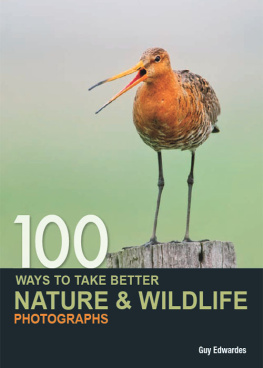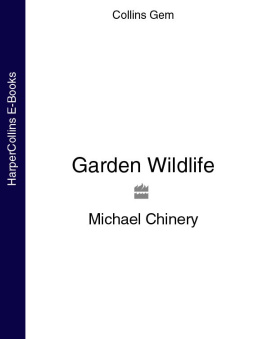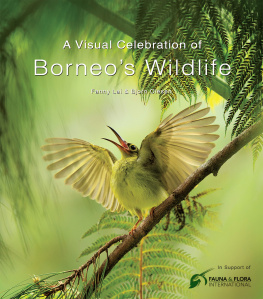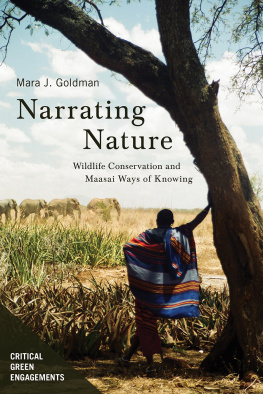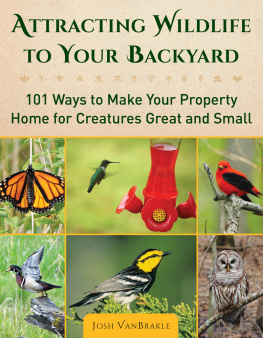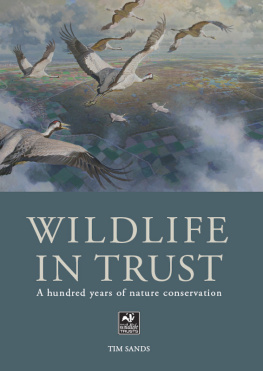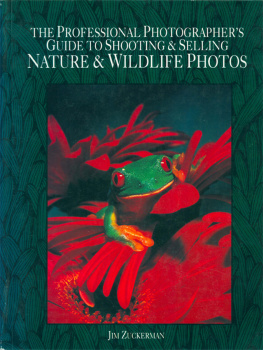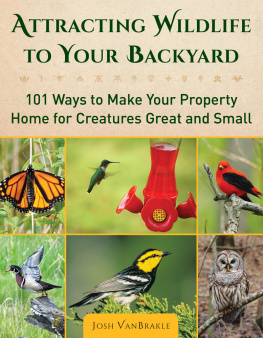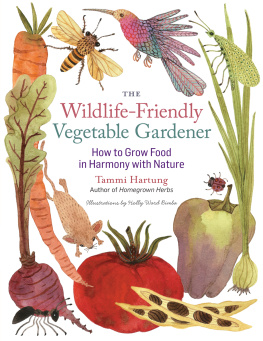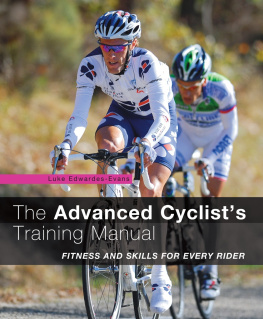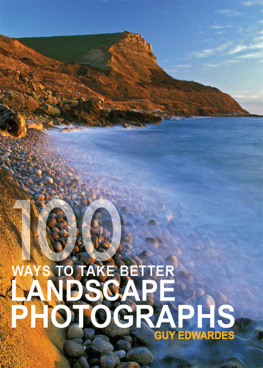To my wife, Cat. Thank you for your support and encouragement and for keeping me company during our treks into the wilds. I look forward to our future adventures together.
PAGE 1: EURASIAN LYNX HIDING IN A SNOW HOLE
Ranua Wildlife Park, Finland.
Canon EOS-1D MkII; EF500mm lens; 1/1250 sec at f/5.6; ISO 250; central focusing point; one-shot AF; tripod with fluid video head.
PAGE 2: BLACK-TAILED GODWITS FIGHTING
Lodmoor RSPB Reserve, Weymouth, Dorset, England.
Canon EOS-1D MkII; EF500mm lens; 1/1600 sec at f/5.6; ISO 250; central focusing point; AI Servo focus; tripod with fluid video head.
PAGE 4: GREAT EGRET
Estero Lagoon, Fort Myers Beach, Florida, USA.
Canon EOS-1D MkII; EF500mm lens; 1/1600 sec at f/8; ISO 250; single manually selected focusing point; one-shot AF; tripod with fluid video head.
A DAVID & CHARLES BOOK
Copyright David & Charles Limited 2009
David & Charles is an F+W Media Inc. company
4700 East Galbraith Road
Cincinnati, OH 45236
First published in the UK in 2009
Text and photographs copyright Guy Edwardes 2009
Guy Edwardes has asserted his right to be identified as author of this work in accordance with the Copyright, Designs and Patents Act, 1988.
All rights reserved. No part of this publication may be reproduced, stored in a retrieval system, or transmitted, in any form or by any means, electronic or mechanical, by photocopying, recording or otherwise, without prior permission in writing from the publisher.
A catalogue record for this book is available from the British Library.
ISBN-13: 978-0-7153-3148-4 hardback
ISBN-10: 0-7153-3148-5 hardback
ISBN-13: 978-0-7153-3149-1 paperback
ISBN-10: 0-7153-3149-3 paperback
Printed in China by RR Donnelley
for David & Charles
Brunel House Newton Abbot Devon
Commissioning Editor: Neil Baber
Editor: Emily Rae
Indexer: Lisa Footitt
Project Editor: Ame Verso
Senior Designer: Jodie Lystor
Production Controller: Alison Smith
Visit our website at www.davidandcharles.co.uk
David & Charles books are available from all good bookshops; alternatively you can contact our Orderline on 0870 9908222 or write to us at FREEPOST EX2 110, D&C Direct, Newton Abbot, TQ12 4ZZ (no stamp required UK only); US customers call
800-289-0963 and Canadian customers call 800-840-5220.


Introduction
Photographing wildlife is always a challenge, especially if you aim to shoot creative, dynamic and illustrative images rather than simple record shots. Capturing images of elusive and often uncooperative animals and birds can be very frustrating and requires tremendous dedication, patience and perseverance. However, when all the hard work pays off there can surely be no other subject that provides so much satisfaction for the photographer.
I have been photographing nature and wildlife for almost 20 years but relatively recently the introduction of digital cameras has revolutionized my work, and that of all photographers. There is no doubt that the latest photographic equipment means that capturing good photographs of wildlife is easier than it has ever been, and the learning process has been speeded up considerably. However, in order to achieve original images of familiar subjects, photographers have to work increasingly hard. The dream purchase of most nature and wildlife photographers is a long, fast telephoto lens but this book explains that a thorough knowledge and understanding of the subjects you are working with is far more important than the camera or the lens you are using. However, if you are lucky enough to own such a lens, this book also explains the best ways to fully exploit its advantages.
Feedback from my previous book, 100 Ways to Take Better Landscape Photographs (D&C, 2005), made it clear that many readers like to be provided with the technical details for each image. Clearly this can be a valuable guide when learning how and when to apply specific camera settings and when to use different techniques in situations similar to those illustrated. Therefore, in this book I have provided detailed technical information for every image.
This book is aimed at photographers of all skill levels. It is not trying to be an all-encompassing guide to nature photography, as this has been done many times before.
The main text describes the basic techniques for less-experienced photographers, while
the captions describe the methods used and the thought processes behind the images.
More experienced photographers will benefit from useful tips and suggestions throughout the book and I hope that the images will provide everyone with inspiration and new ideas.
Remember, the best way to improve as a nature photographer is to spend as much time as possible out in the field observing and working with your subjects. I wish you good luck and good light for all your future nature and wildlife photography.

www.guyedwardes.com
TAWNY OWL
The Barn Owl Centre, Gloucestershire, England.
Canon EOS-1D MkII; EF500mm lens; 1/500 sec at f/5.6; ISO 400; single manually selected focusing point; one-shot AF; tripod with fluid video head.

Nature & Wildlife
Photography Basics


1 Keep a photographers diary
Remembering exactly where locations are and when they are at their best can be difficult. To help with this task, try keeping a large page-per-day diary filled in with information about the locations and subjects you have photographed on that particular day of the year. Include location details such as tidal conditions, the best lighting angles, favoured weather conditions, exactly how to get there and where to head for when you arrive. It is also a good idea to include information relative to the species present, such as seasonal behaviour of animals, flowering times for plants, the date of emergence for butterflies and the photographic techniques that you have found to work well for each species. In my own diaries, I now have over ten years worth of information to look back on, enabling me to see exactly when and where I should be working in the coming weeks and months. This is an invaluable tool, allowing me to plan my shoots well in advance.

